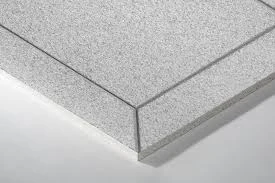9 月 . 24, 2024 00:23 Back to list
Suspended Ceiling Systems for Cross Tees Installation and Design Considerations
Understanding Cross Tee Suspended Ceilings
Suspended ceilings, also known as drop ceilings or false ceilings, have become a popular choice in modern architecture and design due to their versatility, aesthetic appeal, and practical benefits. Among the various components that constitute a suspended ceiling, cross tees play a pivotal role in supporting the ceiling tiles and enhancing the structural integrity of the ceiling system. This article delves into the significance of cross tees in suspended ceilings, particularly in commercial and residential applications.
What are Cross Tees?
Cross tees are the horizontal components of a suspended ceiling grid system. They are installed perpendicular to the main tees, which run the length of the room. Typically made from metal or mineral fiber, cross tees connect the main tee supports, creating a grid in which ceiling tiles are placed. The standard length of cross tees can vary, commonly measuring either 2 feet or 4 feet, allowing for flexibility in design and installation.
Benefits of Cross Tee Suspended Ceilings
1. Load Distribution One of the primary functions of cross tees is to distribute the weight of the ceiling tiles evenly across the main tee framework. This load distribution enhances the structural stability of the ceiling, ensuring that it can endure the weight of the tiles and any fixtures that may be installed, such as lights or air vents.
cross tees suspended ceiling

2. Design Versatility Cross tees allow for creative design possibilities in ceiling layouts. By varying the spacing between cross tees, designers can achieve different tile panel sizes and layouts, which can contribute to unique aesthetics. This flexibility can also accommodate various lighting and ventilation systems without compromising the visual appeal of the ceiling.
3. Ease of Installation The grid system created by main tees and cross tees simplifies the installation process for suspended ceilings. Installers can easily measure, cut, and fit the components into place, reducing labor time and costs. Additionally, the design of the grid allows for easy access to the space above the ceiling, which is essential for maintenance and repairs.
4. Acoustic Properties Many cross tee suspended ceilings offer enhanced acoustic performance, absorbing sound and minimizing noise transmission between rooms. This makes them ideal for office spaces, educational institutions, and other environments where noise control is essential. The materials used in the ceiling tiles can significantly influence acoustic performance, with options available that cater specifically to sound absorption.
5. Fire Safety and Insulation Cross tees can also contribute to the fire-resistant properties of a suspended ceiling system. Many designs incorporate fire-retardant materials, ensuring that they meet safety regulations. Additionally, the air gap created by a suspended ceiling can improve thermal insulation, helping to regulate indoor temperatures and enhance energy efficiency.
Conclusion
Cross tee suspended ceilings are an integral part of modern building design, combining functional benefits with aesthetic appeal. Their ability to enhance structural stability, offer design flexibility, and improve acoustic performance makes them a favored choice for various applications. Whether in commercial buildings, schools, or residential spaces, cross tees help create environments that are visually pleasing while supporting practical needs. As architects and designers continue to explore innovative ceiling solutions, the timeless appeal of cross tee suspended ceilings will likely remain a staple in contemporary design.
-
Revolutionizing Interior Design with Ceilings t grid Suspended SystemNewsOct.29,2024
-
Revolutionizing Ceiling Design with ceiling access panel with Gypsum Tile WaterproofNewsOct.29,2024
-
Revolutionizing Interior Design with PVC Gypsum Ceiling: A Comprehensive GuideNewsOct.29,2024
-
Elevating Interior Design with High quality Mineral Fiber Ceiling TilesNewsOct.29,2024
-
Revolutionizing Interior Design with PVC Gypsum Ceiling: A Comprehensive GuideNewsOct.29,2024
-
Elevating Interior Design with High-Quality Mineral Fiber Ceiling Tiles: A Comprehensive GuideNewsOct.29,2024







